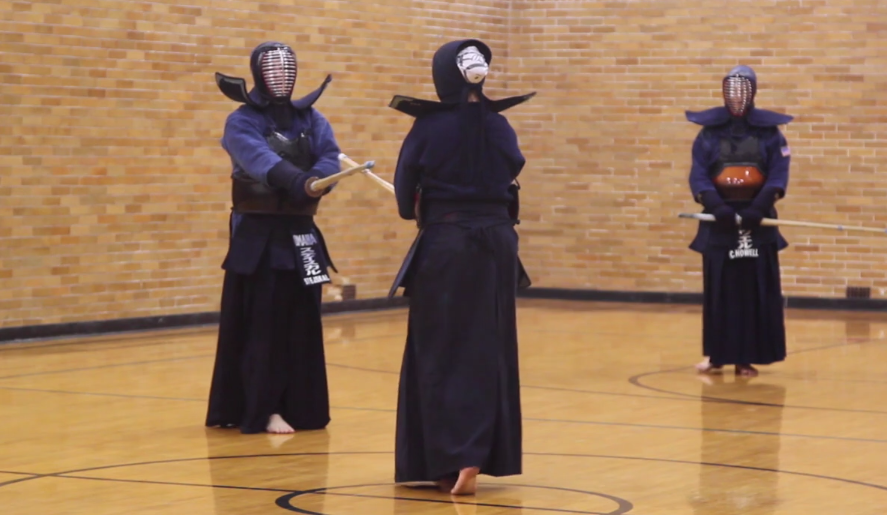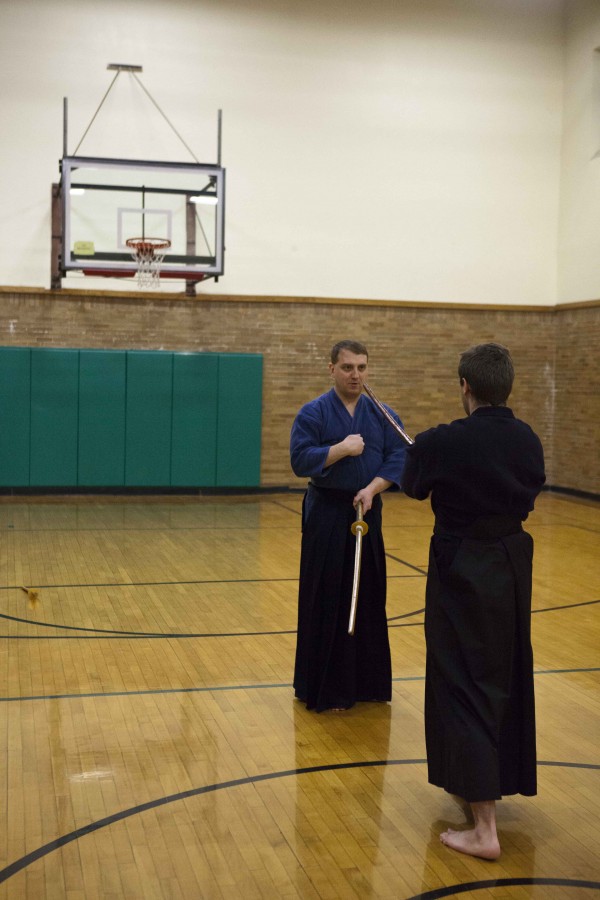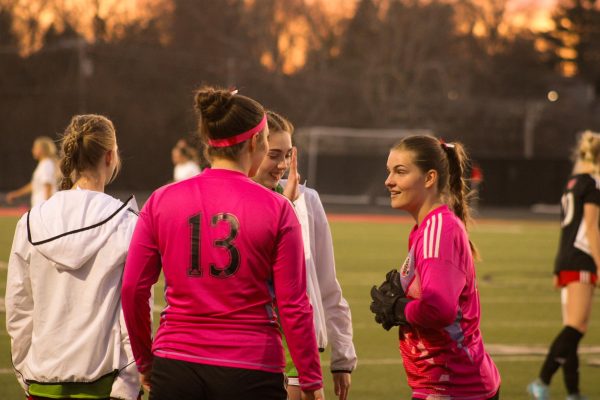VIDEO: A man and a sword
Math instructor participates in Kendo, popular Japanese sword art
The sparring begins in a stare down. Both fighters won’t move, waiting for the other to make a move.
As the tension mounts, one of the fighters goes in for a strike.
The swing of the shinai comes, but his opponent reacts quickly, and blocks the attack.
Back and forth the two go, one strikes, the other blocks. Throughout the spar, scoring hits are scarce, but finally math instructor Ryan Stejskal lands the final blow to win his Kendo match.
During his time at Kansas State University, Stejskal enrolled in a Japanese language/culture course. The course wasn’t actually his first choice. He only took it because he could get out of chemistry. Luckily, the class gave him the opportunity to travel to Japan.
“I’ve always had an interest in that part of the world, but when I studied and got the chance to use it, I knew I’d like to take the opportunity.” Stejskal said.
In Japan, Kendo clubs are in almost every high school and some schools even offer it as a P.E class. For that reason, he heard about Kendo very quickly and found his new passion.
In Kendo, participants use shinai (bamboo swords) to fight instead of real swords, and have protective body armor and helmets on during combat. This way, they can still go full speed, but not worry so much about injury.
Stejskal describes the fighting style as a sort of Japanese fencing.
“It’s a little bit different from normal fencing because a Japanese sword is more of a cutting weapon rather than a stabbing thrusting weapon,” Stejskal said. “So you’ll notice that most of the attacks are swinging the sword.”
In Kendo, there are many ranks, like the belt system in other martial arts, but there are no belts.
“There are what are called kyu ranks, which are like color belts and then there are dan ranks which are like black belts,” Stejskal said. “…You start at sixth kyu and go up to first kyu, and then you go to first dan and the dans are numbered upward. If you’re a complete master, you’re an eighth dan.”
Currently, Stejskal is ranked third dan, which he achieved two years ago. In order to keep ranking up, Stejskal and anyone else in his dojo (a place for practicing kendo) must attend a convention in the springtime. Usually it is in Dallas or Denver, and dojos from all across the Midwest attend every year.
The ranking system consists of learning a new set of skills, following the waiting period and then be judged using kata (showing of techniques using a dummy partner) and shinsa (full sparring with another partner). The process becomes more and more rigorous each rank according to Stejskal.
For example, before Stejskal could become a third dan, he had to wait at least 2 years. In addition, he had to pass a written exam and perform his kata in front of five fifth dans and have three approve his techniques.
“It is kind of nerve-racking,” Stejskal said. “…There are a lot of things going on around you, but you don’t think about them.”
Along with the stress of the convention, the preparation for it is a grind according to Stejskal.
Him and everyone else at the dojo practice twice a week on Wednesdays and Saturdays. During practice they start with kata for 20 minutes, focusing on counterattacks they are lacking at. Then they have 20 minutes for practicing strikes on still opponents. Finally, they end on sparring, like how they would at the convention.
For Stejskal, now being at a higher rank, he has to wait an extra year every time he ranks up from now on, because each new rank calls for much more concentration and skill mastery.
To Stejskal, the extra time is okay, because he wants to keep with Kendo for as long as possible.
“I have no immediate plans to stop,” Stejskal said. “As long as it’s fun and if my body holds out then I will continue to do it.”
This story is from Issue Four of the Lance. Check it out below:
Your donation will support the student journalists of Omaha Westside High School. Your contribution will allow us to purchase equipment and cover our annual website hosting costs.








